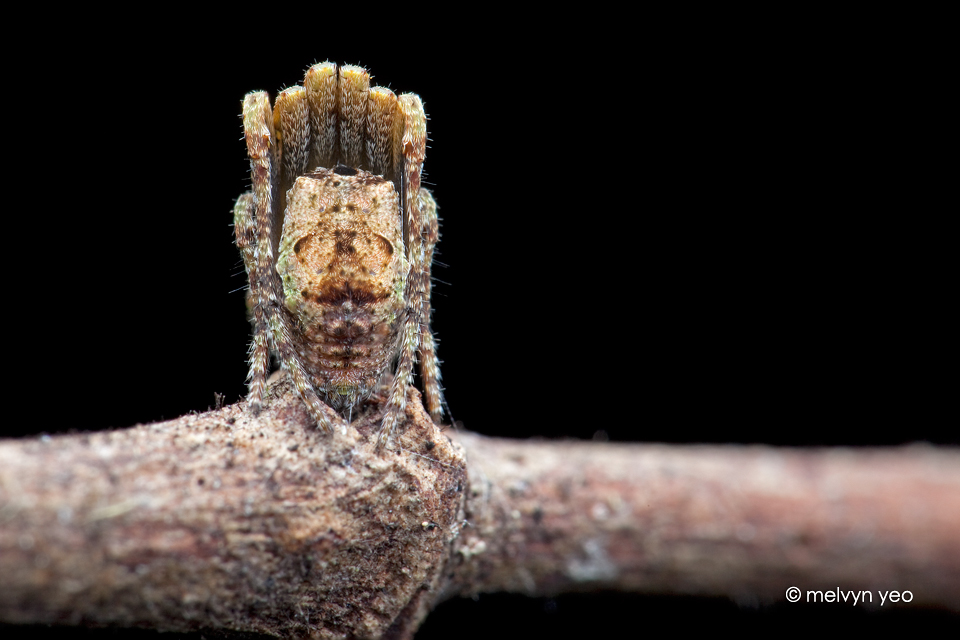ShopDreamUp AI ArtDreamUp
Deviation Actions
Suggested Deviants
Suggested Collections
You Might Like…
Featured in Groups
Description
Taken at night in Singapore.
Quote from en.wikipedia.org/wiki/Orb-weav…
The typical orb-weaver spiders (family Araneidae) are the most common group of builders of spiral wheel-shaped webs often found in gardens, fields and forests. Their common name is taken from the round shape of this typical web, and the taxon was formerly also referred to as the Orbiculariae.
Orb-weavers have eight similar eyes, hairy or spiny legs, and no stridulating organs. The Araneidae family is cosmopolitan, including many well-known large or brightly colored garden spiders. The 3,006 species in 168 genera worldwide make Araneidae the third-largest family of spiders known (behind Salticidae and Linyphiidae).[1] The orb-weavers include over 10,000 species and make up about 25% of spider diversity.[2]
However, orb-webs are also produced by members of other families. The large golden orb-weavers (Nephilidae) and the long-jawed orb weavers (Tetragnathidae) were formerly included in the Araneidae; they are indeed closely related to them, being part of superfamily Araneoidea. Their webs are similar to those of the typical orb-weavers, but tend to be less sophisticated and often have an irregular instead of a neat spiral arrangement of the prey-capturing threads. The cribellate or hackled orb-weavers (Uloboridae) belong to a distinct superfamily of the suborder Araneomorphae; their webs are often very sophisticated, but Uloboridae use neither venom to kill their prey, nor sticky threads in their web, and probably evolved the orb structure independently. Uloboridae are cribellate, and their threads can be recognized by the fuzzy and dull appearance, which captures prey by a velcro-like mechanism.
Generally, orb-weaving spiders are three-clawed builders of flat webs with sticky spiral capture silk. The building of a web is an engineering feat, begun when the spider floats a line on the wind to another surface. The spider secures the line and then drops another line from the center, making a "Y". The rest of the scaffolding follows with many radii of nonsticky silk being constructed before a final spiral of sticky capture silk. The third claw is used to walk on the nonsticky part of the web. Characteristically, the prey insect that blunders into the sticky lines is stunned by a quick bite, and then wrapped in silk. If the prey is a venomous insect, such as a wasp, wrapping may precede biting.
Many orb-weavers build a new web each day. Most orb-weavers tend to be active during the evening hours. They hide during the day. Generally, towards evening, the spider will consume the old web, rest for approximately an hour, then spin a new web in the same general location.
Quote from en.wikipedia.org/wiki/Orb-weav…
The typical orb-weaver spiders (family Araneidae) are the most common group of builders of spiral wheel-shaped webs often found in gardens, fields and forests. Their common name is taken from the round shape of this typical web, and the taxon was formerly also referred to as the Orbiculariae.
Orb-weavers have eight similar eyes, hairy or spiny legs, and no stridulating organs. The Araneidae family is cosmopolitan, including many well-known large or brightly colored garden spiders. The 3,006 species in 168 genera worldwide make Araneidae the third-largest family of spiders known (behind Salticidae and Linyphiidae).[1] The orb-weavers include over 10,000 species and make up about 25% of spider diversity.[2]
However, orb-webs are also produced by members of other families. The large golden orb-weavers (Nephilidae) and the long-jawed orb weavers (Tetragnathidae) were formerly included in the Araneidae; they are indeed closely related to them, being part of superfamily Araneoidea. Their webs are similar to those of the typical orb-weavers, but tend to be less sophisticated and often have an irregular instead of a neat spiral arrangement of the prey-capturing threads. The cribellate or hackled orb-weavers (Uloboridae) belong to a distinct superfamily of the suborder Araneomorphae; their webs are often very sophisticated, but Uloboridae use neither venom to kill their prey, nor sticky threads in their web, and probably evolved the orb structure independently. Uloboridae are cribellate, and their threads can be recognized by the fuzzy and dull appearance, which captures prey by a velcro-like mechanism.
Generally, orb-weaving spiders are three-clawed builders of flat webs with sticky spiral capture silk. The building of a web is an engineering feat, begun when the spider floats a line on the wind to another surface. The spider secures the line and then drops another line from the center, making a "Y". The rest of the scaffolding follows with many radii of nonsticky silk being constructed before a final spiral of sticky capture silk. The third claw is used to walk on the nonsticky part of the web. Characteristically, the prey insect that blunders into the sticky lines is stunned by a quick bite, and then wrapped in silk. If the prey is a venomous insect, such as a wasp, wrapping may precede biting.
Many orb-weavers build a new web each day. Most orb-weavers tend to be active during the evening hours. They hide during the day. Generally, towards evening, the spider will consume the old web, rest for approximately an hour, then spin a new web in the same general location.
Image size
960x640px 295.8 KB
Make
Canon
Model
Canon EOS 5D Mark II
Shutter Speed
1/125 second
Aperture
F/16.0
Focal Length
100 mm
ISO Speed
200
Date Taken
Nov 9, 2013, 2:30:26 AM
Sensor Size
6mm
© 2013 - 2024 melvynyeo
Comments10
Join the community to add your comment. Already a deviant? Log In
it looks terribly uncomfortable to be sitting in that position to me xD

































